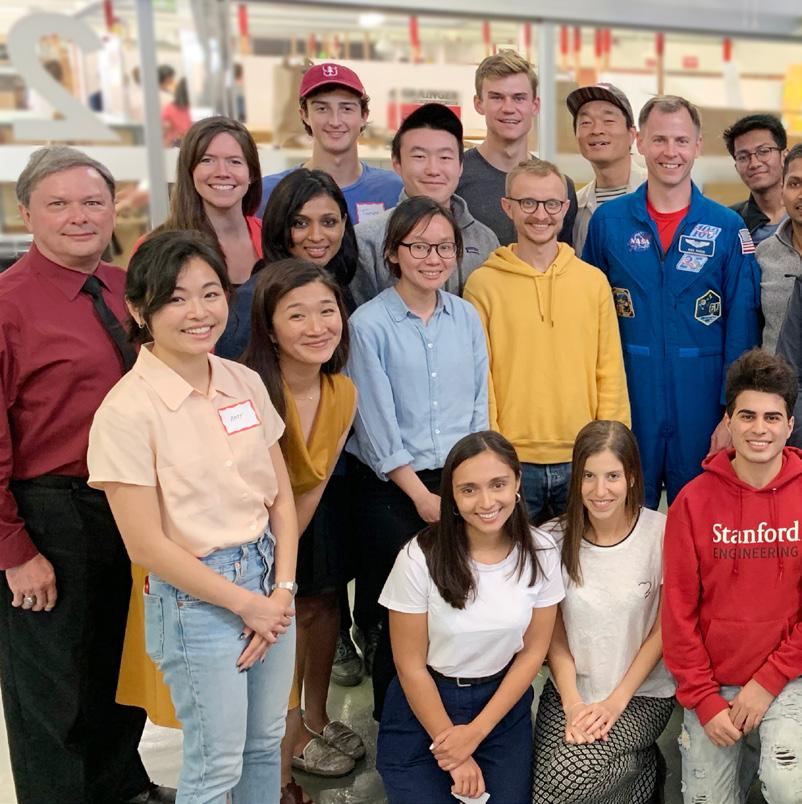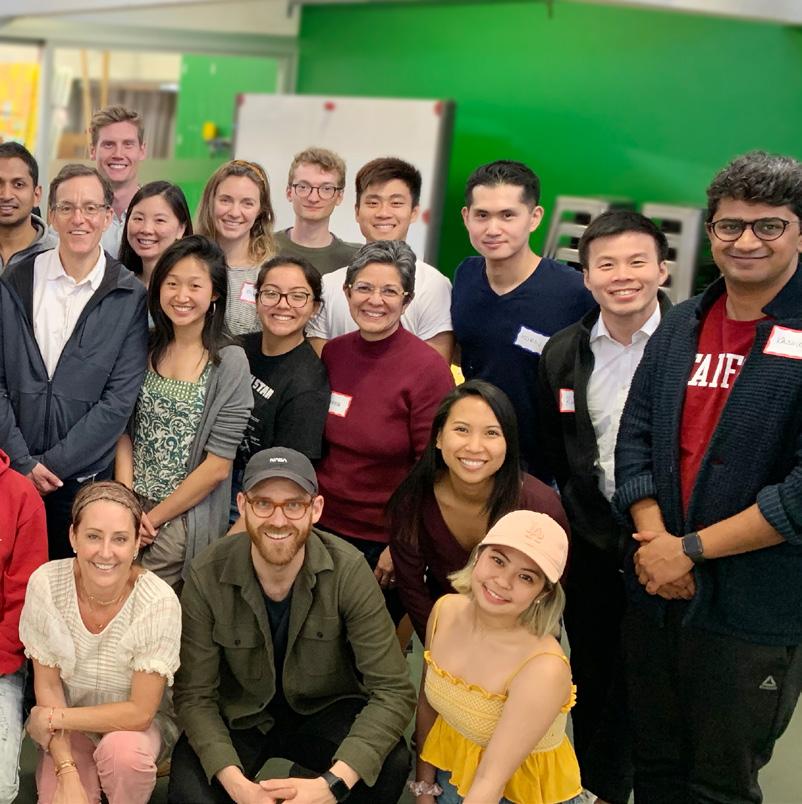
6 minute read
How to Survive a Rocketship Explosion
Rocketship How to survive a Explosion
or a reflection on the teaching & learning experiments launched with Design Work 2020
Rocketship Explosion
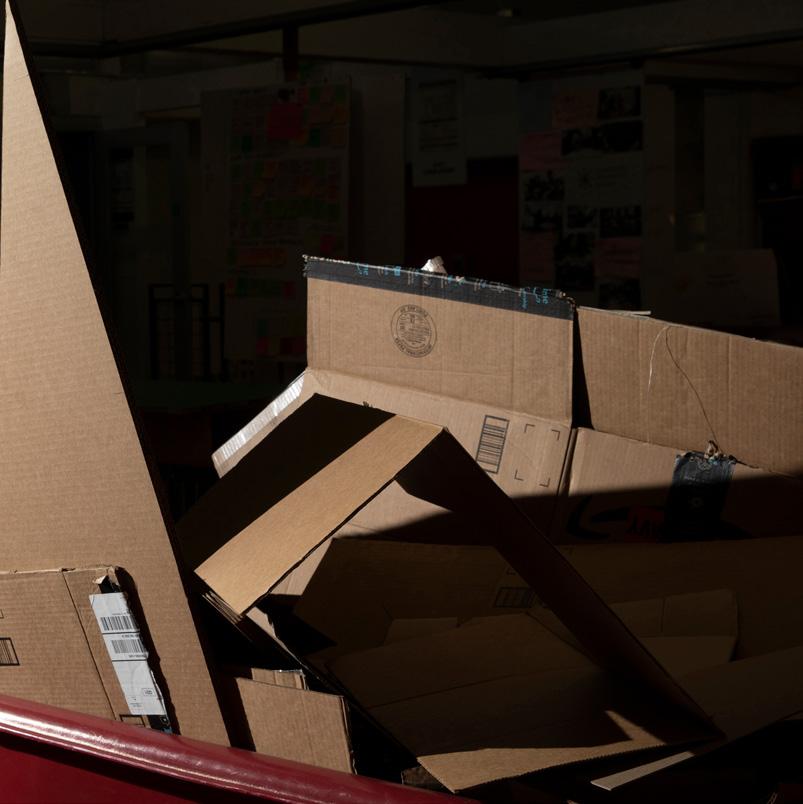
by Kelly Schmutte & Seamus Yu Harte
Hook.
That’s what astronaut Nick Hague told our students in Design Work 2020 after sharing a video of one of the most triumphant failures of his career— his rocket ship exploding.
Here’s the story:
On October 11, 2018, Nick Hague climbed into a rocket. He had been training his entire career for this moment. Then, 37 seconds after lift-off—the rocket exploded. Thankfully, 33 seconds after lift-off Nick and his co-pilot Aleksey Ovchinin were ejected from the rocket and safely landed somewhere in rural Russia where a team of doctors and scientists had already been dispatched to—well—welcome them home safely.
Nick went on to share how the difference in that critical moment of life or death went in his favor because of the countless men and women that work tirelessly to successfully launch a mission. “No one gets to the moon alone,” he said.
Six months later, Nick and Aleksey climbed back into a (new) rocket. Then, three hours later, Nick and Aleksey were floating in space with their new friends onboard the International Space Station ready to conduct experiments for the next six months in microgravity.
Lucky for us, Nick was one of the last guest lecturers to visit our class. Our “d.school rocket” blew up just after he left. Suddenly, we found ourselves ejected from our planned trajectory of navigating some of our most ambitious teaching and learning experiments in years.
Unbeknownst to us, Nick had just shared the most important lesson we’d need to know for the months to come:
Backstory.
Just like Nick and Aleksey, we had been working for a few years on what would become the experiments of Design Work 2020. And just like Nick and Aleksey, we suddenly found ourselves dazed and confused in a metaphorical rural field once covid-19 blew our rocketship into a new trajectory.
Just as Nick had been training for years to become an astronaut, Design Work 2020 was one of the most ambitious teaching and learning experiments we’d done in a while—and it too was years in the making.
To summarize quickly, after identifying the ability to navigate ambiguity as the designer’s superpower a few years ago, teaching and learning experiments have been underway to design and develop an optimal curriculum for this learning outcome. From one-off workshops to redesigning the seminal undergraduate design course me115a with David Kelley, curriculum experiments large and small led the team to an exciting driving question last year:
If nasa doesn’t start training people to be astronauts by launching them into space, then why do we start training people to be designers by launching them into ambiguity?
With that question in mind, we started crafting experiments that would allow us to expand the runway of a student’s experience here at the d.school:
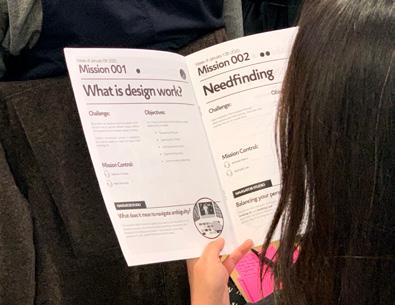

Experiments.
Modifying Quarterly Flight Paths
Inspired by how nasa conducts “space camp,” an earth-bound training period for astronauts, we made Design Work 2020 a two-quarter commitment. The first quarter, or “basic training,” was designed to go deep on skills and abilities to build confidence. The second quarter, or “advanced training,” was where they’d launch into a more traditional project-based mission.
Modifying Weekly Flight Paths
From years of teaching, we know an unnecessary amount of student time and energy is wasted on team coordination for design projects needing to be completed outside of class time. Knowing that the first quarter was going to be about going deep on skills, we took the traditional m/w class block and double blocked the time for Mondays during the first quarter (eg, 1:30–5:20 on Mondays instead of 1:30–3:20). More in-class time on Monday allowed us to create “Monday Missions.”
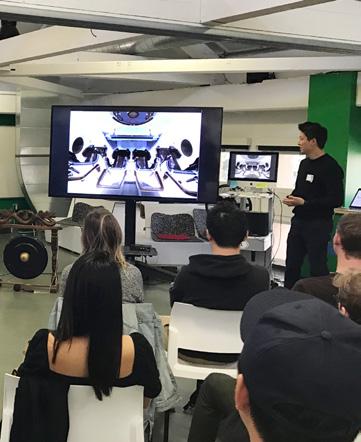
Monday Missions (vs. Design Projects)
Monday Missions were 2–3 hour micro project-based learning experiences geared toward a specific skill or ability, rather than an entire design process. Imagine how astronauts practice space walking missions in a pool before attempting them on the space
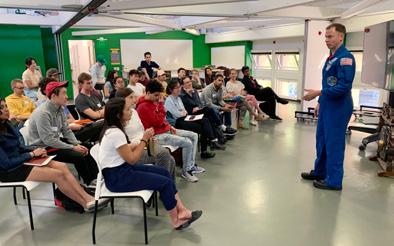
Mission Control Directors
Inspired by how nasa leverages expertise by having different people direct different aspects of a mission from mission control, we invited veteran teachers to co-design and lead Monday Missions. This leveraged the expertise across the teaching community, exposed students to different ways of thinking and allowed the core teaching team to keep an eye on how the macro learning experience was unfolding knowing the micro lessons are being directed by experts. But diving so deep into skills on Monday required us to find balance on Wednesday.
station. From topics like designing the future of Memorial Church, pitching the next Pixar film, and building a cardboard transport pod to carry precious personal cargo, our missions were diverse and designed to safely push students outside of their comfort zone. Of course, designing and delivering a quarter’s worth of Monday Missions is a lot for only two instructors, so we again looked to see how they did it at nasa.

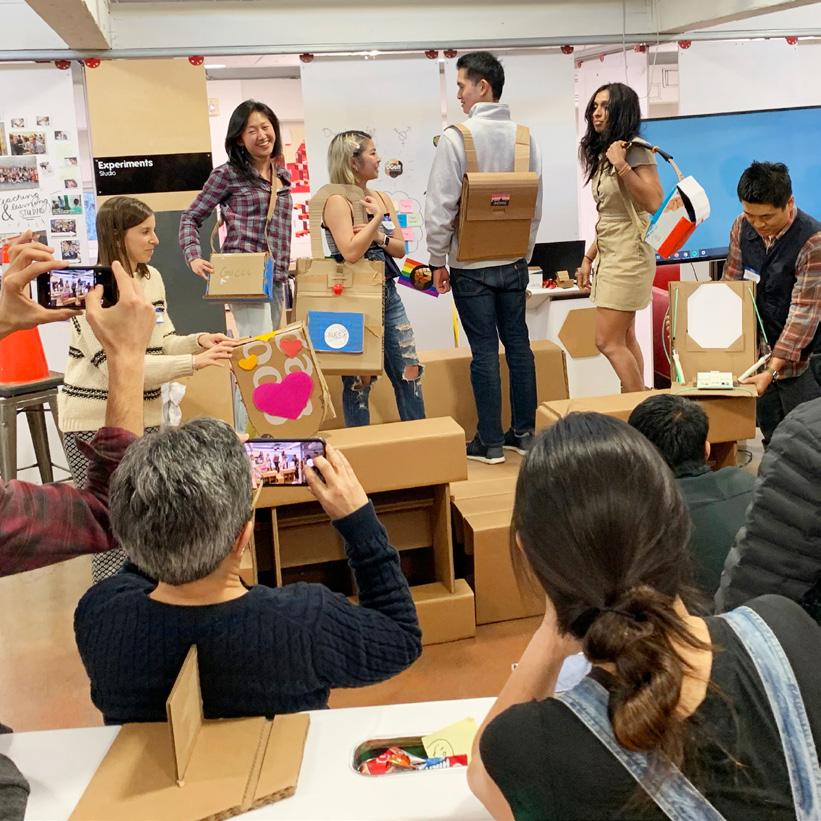
Wednesday Navigator Studio & Spotlights
Similar to how nasa would have a post-flight debrief to learn what happened and how to improve, Navigator Studio was the complement to Monday Missions, creating space to unpack the skills they’d applied with their teams on Monday, and step back and look at broader design strategies through real world case studies presented by the teaching team.
And similar to how we had “Mission Control Directors” come in on Mondays, often we asked people that had “been to the moon and back” in their own worlds to come in and share their experience with our students. We called these Navigator Spotlights. One student reflected, “I loved being introduced to the myriad of ways design can be applied.”
Conclusion.
This was just a handful of the many experiments we had in motion. And we are just as excited about our big question:
“If nasa doesn’t start training people to be an astronaut by launching them into space, then why do we start training people to be designers by launching them into ambiguity?”
today as we were in the fall.
But as the old saying goes,
And to update that for this story,
When our rocketship of curriculum experiments exploded with the covid-19 pandemic, nothing else mattered but the people on it—our students. And all of our effort immediately went into making sure our students were okay as people first—

and students second. And that meant letting a lot of our experiments go. It is hard to say how these experiments would have played out over their full trajectory. But there are some promising indicators.
Quantitatively speaking, we were able to document a decrease in the moments where students self-reported being in the “panic zone” compared to the same reflection activity run last year.
For various reasons, many of the students needed to remove themselves from the two-quarter commitment once they were required to leave campus in the spring quarter. That said, many of the students that made it out of “Basic Training” showed a notably increased confidence in the ability to navigate ambiguity, compared to other students in the spring quarter.
Fall is coming and we’ve already begun rebuilding our next rocketship. This time we’ll be launching to and from strange new worlds.
Failure is an option. But it’s nothing to fear. We know we’ll survive. Because of the people around us.
